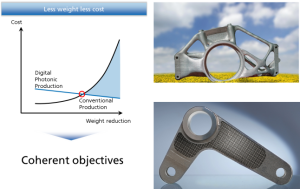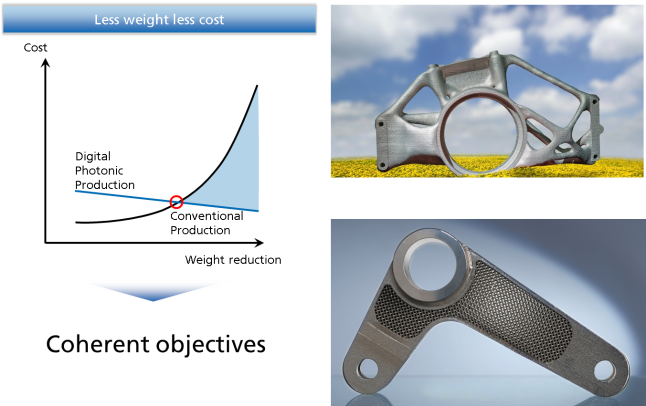
By Reinhart Poprawe
One of the main challenges of modern manufacturing is the dilemma between scale and scope, i.e., the ability to produce high volumes at low prices, yet systematically integrating the increasing demand for individuality in the products. As a consequence, concepts for one piece flow at the cost of mass production are developed. Laser based manufacturing systematically resolves this dilemma and provides an extreme degree of flexibility and precision. In principle, parts can be designed totally independent of the manufacturing process, by focusing on the functionality of the part like static and dynamic stability or stiffness. In parallel, economic and ecologic demands such as light weight, deformation behavior by mesh structures and scaffolds or even other functionalities like conductivity can be integrated. Because the production chain leaps directly from the computer into the part and no tools are required, the process is also referred to as “Digital Photonic Production.” Examples of this process are Selective Laser Melting, Laser Metal Deposition and Ablation by ultrafast lasers.
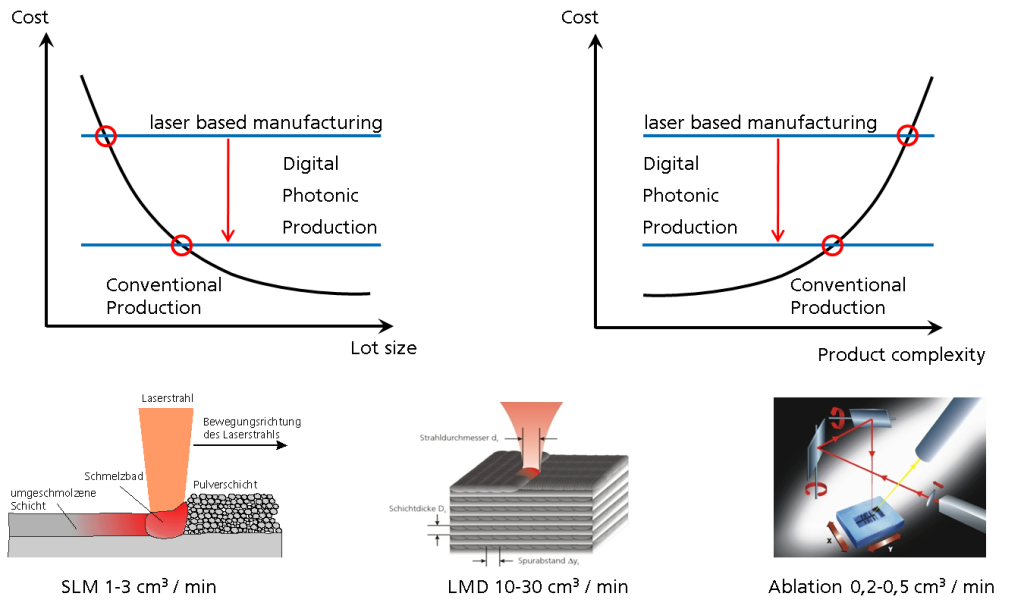
The principle of 3D printing of products, directly from CAD data, is not new. In Stereo lithography of polymers and Selective Laser Sintering of metal compounds – not product relevant metallic alloys – it has been around for more than 35 years. For about 20 years, the process of 3D Printing of metallic products – made from serial materials – has been demonstrated and implemented very successfully into the markets of Rapid Prototyping and individualized production. However, the unique advantages of tool free manufacturing, directly from CAD data, with almost no geometric restrictions and lot size independent unit costs could not be applied in competition to conventional manufacturing routes for larger lots and greater impact in the overall manufacturing industry.
Examples where Additive Manufacturing is in reality today are fully individualized products for human implants, casting tools with adapted, conformal cooling channels or product-integrated surface layers with monolithically integrated functional structures.
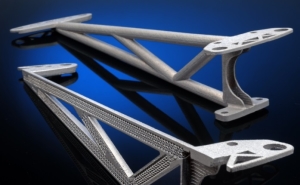
Only the raise of material build-up rates in recent process developments allows first applications in series production. In Selective Laser Melting (SLM) actual build-up rates allow deposition of approx. 1 to 3 cm3/min corresponding to approx. 1 kg of steel/h or approx. 300 g/h Aluminum. In Laser Metal Deposition (LMD) these values are app. 10x, 10 to 30 cm3/min corresponding to approx. 10 kg/h of steel or approx. 3 kg/h Aluminum. Digital Photonic Production includes not only generative laser processes but also ablation processes. In high precision ablation by ultrafast laser radiation, more or less material independent data are in the frame of 0.2 cm3/min corresponding to approx. 200 g/h. However, here the precision is in the µm-range and thus needs no finishing.
The advantages of “Individualization for free,” “Complexity for free,”” Systematics of Less weight – less cost” and “No tools” are convincing and generate totally new manufacturing and product examples.
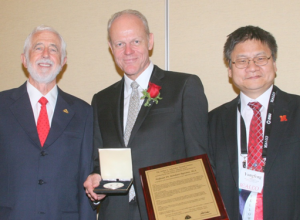
In the future the fundamental physical and engineering research challenges need to be addressed. New materials tailored for Additive Manufacturing can be designed and combined with the desired functionality of the products. Among those are absorption characteristics, powder feed rates and build up rates. The transformation of the applications out of the “Rapid Prototyping” – domain into the domain of “Digital Photonic Production” is happening right now and it shows the vision of a series production of components e.g., in the aerospace and the automotive industry.
As a consequence of this development, a long dreamed vision of design engineers has come true: A part can be manufactured for design instead of being designed for manufacture.
Professor Reinhart Poprawe is the director of Fraunhofer ILT and is a past president of LIA.






